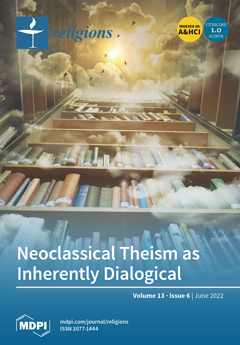This paper explores the ways change is addressed in Sāṅkhya, one of the major Hindu schools of philosophy, specifically in light of the classical debate between Hindu and the Buddhist philosophers regarding intrinsic nature (
svabhāva) and the concept of transformation (
[...] Read more.
This paper explores the ways change is addressed in Sāṅkhya, one of the major Hindu schools of philosophy, specifically in light of the classical debate between Hindu and the Buddhist philosophers regarding intrinsic nature (
svabhāva) and the concept of transformation (
pariṇāma). When we closely analyze Sāṅkhya categories, the issue of temporality stands out, because for Sāṅkhya philosophers time is not a distinct category and is infrequently addressed in classical Sāṅkhya. Nonetheless, we can still extract two different notions related to time, dynamism intrinsic to
rajas, and temporality that is enclosed within the notion of space and spatial objects. What this implies is that the temporality implicit within the concept of change is only applicable to the last of the evolutes, according to Sāṅkhya cosmology. However, the Sāṅkhyan idea of 16 transformations (
pariṇāma) applies to all categories, except
puruṣa. By exploiting the parameters of these arguments, this paper makes the case for a closer analysis of the category of transformation in classical Sāṅkhya. Reading about change in the light of
svabhāva, the intrinsic nature of an entity, versus the idea of its termination, allows us to have a wider conversation on what it means for something to change from within the Sāṅkhya paradigm.
Full article





